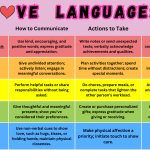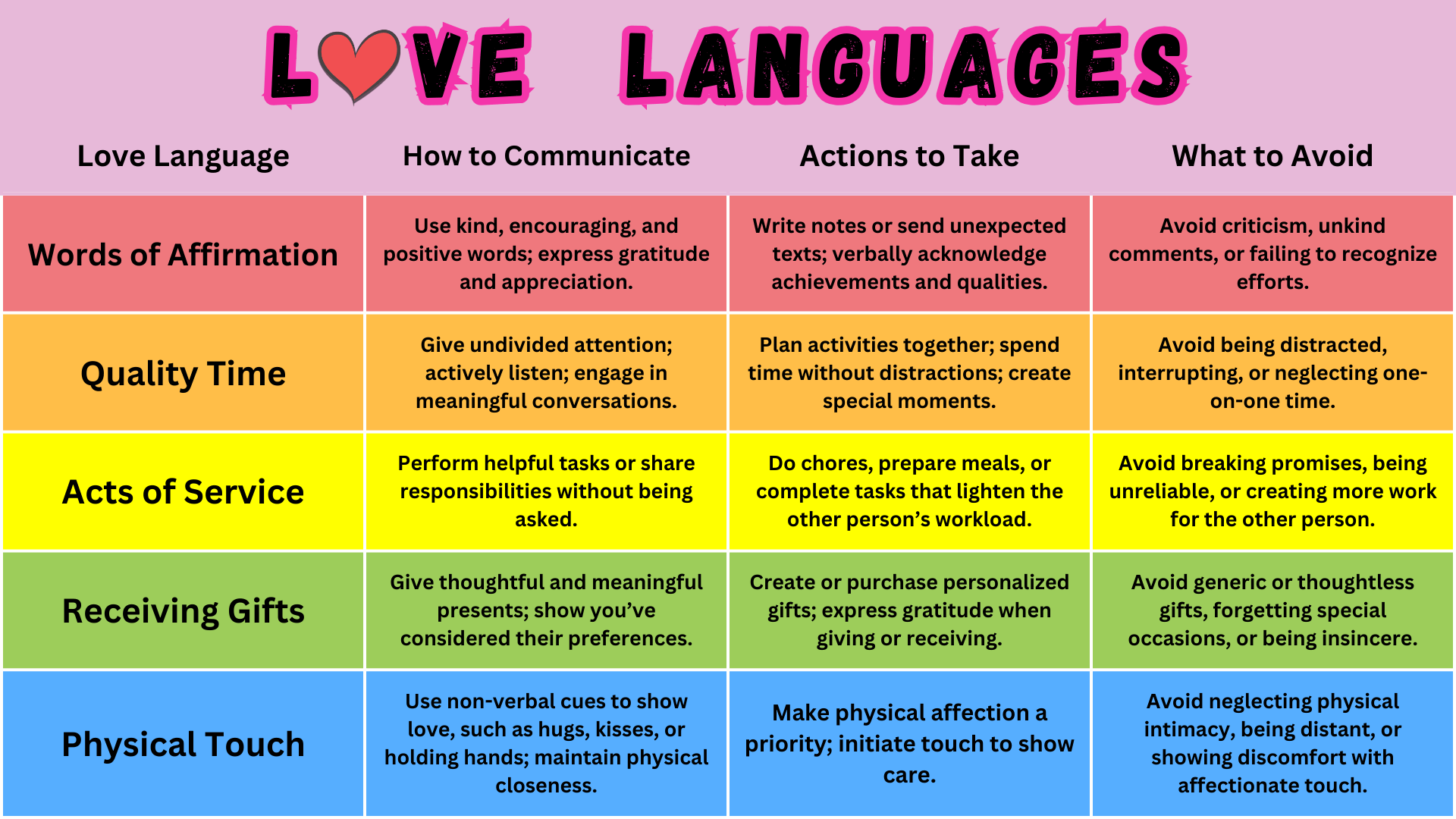valentinesdayxx.com – Love is a universal emotion, but the way people express and receive it can vary greatly. The concept of love languages, introduced by Dr. Gary Chapman in his book The Five Love Languages, highlights the different ways individuals show and interpret love. Understanding these languages can strengthen relationships, improve communication, and create deeper emotional connections.
The Five Love Languages
- Words of Affirmation – People with this love language feel most loved through verbal expressions of appreciation, encouragement, and affection. Compliments, kind words, and “I love you” are powerful for them.
- Example: “You mean the world to me. I’m so grateful to have you in my life.”
- Acts of Service – For some, actions speak louder than words. They feel most loved when their partner does thoughtful things, like helping with chores, making a meal, or handling responsibilities.
- Example: Surprising your partner by preparing their favorite breakfast or running errands for them.
- Receiving Gifts – This love language isn’t about materialism; it’s about thoughtfulness. A well-chosen gift, whether big or small, symbolizes love and appreciation.
- Example: Bringing home their favorite snack just because you were thinking of them.
- Quality Time – Undivided attention and meaningful interactions make this person feel valued. They cherish deep conversations, shared experiences, and uninterrupted moments together.
- Example: Planning a weekend getaway or simply putting away your phone to fully engage in conversation.
- Physical Touch – Some people feel most connected through physical closeness. Holding hands, hugs, kisses, and gentle touches help them feel secure and loved.
- Example: Cuddling on the couch while watching a movie or a warm embrace after a long day.
Why Understanding Love Languages Matters
Many relationship conflicts arise when partners express love differently. For example, one partner may show love through acts of service, while the other craves words of affirmation. Recognizing each other’s love language can:
- Prevent misunderstandings and unmet expectations.
- Strengthen emotional bonds.
- Enhance intimacy and connection.
- Foster appreciation for each other’s unique ways of expressing love.
Discovering Your Love Language
To identify your love language, consider:
- What makes you feel most loved and appreciated?
- How do you naturally express love to others?
- What do you often complain about in relationships? (e.g., “I wish you’d tell me you love me more” could indicate Words of Affirmation.)
Adapting to Your Partner’s Love Language
Even if you and your partner have different love languages, you can adapt by consciously expressing love in ways that resonate with them. Small, thoughtful gestures that align with their love language can make a big difference in the strength and happiness of your relationship.
Final Thoughts
Love languages offer a valuable framework for understanding how we give and receive love. By learning and embracing each other’s preferred ways of expressing affection, couples can build stronger, healthier, and more fulfilling relationships. Whether through words, actions, gifts, time, or touch, every expression of love counts when it’s tailored to the heart of the one receiving it.








